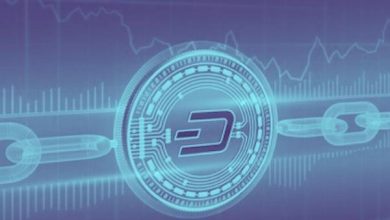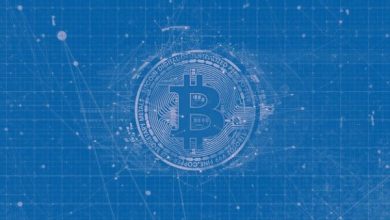How to Take Out A Loan With Maker Dai: Complete Guide
MakerDAO has gained widespread recognition over the last several months due in large part to the success and prevalence of its stablecoin — Dai.
Metrics released by MakerDAO and Beneath back in February indicated that the decentralized stablecoin had a 20 percent monthly growth rate in holders and active addresses from its launch until January 2019. Further, the number of holders of Dai had a 42 percent retention rate over the same period.
Maker’s Dai has become the flagship of the rising narrative towards decentralized finance (DeFi) on Ethereum, but its prominence has also brought some scaling problems. More than 6,000 CDPs have been opened on Maker for Dai in 2019 alone, contributing to roughly 2.17 million ETH locked up in CDPs.

As a result, the governance community, who consist of MKR token holders, have had to raise the stability fee to 7.5 percent in order to assist Dai in regaining its parity with its USD peg. Similarly, the manual complexity of managing collateralization ratios of CDP loans by users has led to nearly 14 percent of CDP contracts auto-liquidating so far.
This has prompted the creation of CDP Saver, which is a web app designed to help users manage their CDP contracts and protect them from liquidation.
Despite the problems facing MakerDAO, it remains a momentous project in the broader Ethereum ecosystem with some strong support behind it. And its novelty as an over-collateralized, decentralized lending protocol is attractive to many users.
So, what exactly is Maker and how can you take out a Dai loan?
Brief Overview of MakerDAO and Dai
MakerDAO is a decentralized autonomous organization (DAO) on the Ethereum network that consists of two tokens:
- Maker (MKR)
- Dai — Stablecoin
MakerDAO and its parameters for issuing Dai via loans are managed by a community of MKR token holders, who function as the governing body and decide on issues such as the stability fee and collateralization ratio of ETH to Dai. The primary functionality of MakerDAO is the decentralized, censorship-resistant issuance of loans.
The loan process works by smart contracts known as collateralized debt positions (CDPs) which ‘mint’ and ‘burn’ the stablecoin Dai based on the issuance and return of the stablecoin to the CDP. Loans taken from the CDP by users are over-collateralized, meaning that more ETH than Dai issued needs to be locked up in the CDP by the user to cover the loan. The ratio of the collateralization is known as the ‘collateralization ratio’ and is currently 1.5 ETH to 1 Dai.
For example, if Alice wants to take out a loan from the Maker CDP for 100 Dai, she would need to send at least $150 worth of ETH to the CDP (because Dai is equivalent to $1). However, it is highly recommended that you send more than the 150 percent ratio as the CDP will auto-liquidate if the value of the ETH in the CDP falls below the 150 percent ratio threshold.
In return, the CDP locks up Alice’s ETH and ‘mints’ 100 Dai to issue to Alice. Should the value of Alice’s contract (collateralized in ETH) fall below the 1.5 ETH to Dai ratio, MakerDAO will automatically liquidate her ETH and sell it on the market at a 3 percent discount plus a 13 percent liquidation penalty.
This is performed to cover the Dai in circulation should the collateralization of the system (ETH) not be sufficient to back the circulating Dai if the price of ETH collapses. Notably, the price of ETH has dropped significantly, and Dai has remained stable — despite losing a small parity with its USD peg over the last several months. Tools like CDP Saver can be very useful in managing your CDP collateralization ratio so that your position does not auto-liquidate.
Alice can return the loaned Dai to the CDP at any time, and once she does, she is returned the locked up ETH in the CDP. However, Alice also needs to pay the stability fee, which is similar to interest on the loan and is currently 7.5 percent. The Dai is ‘burned’ from the supply once Alice returns it to the CDP.
MakerDAO provides a highly useful dashboard to keep track of network metrics concerning Maker Dai and the current state of the CDPs.
MakerDAO and its issuance of Dai are intriguing for several reasons. Mainly, there are essentially no lenders, as the protocol functions as the lender via minting and burning of the Dai. Loans in Dai can subsequently function as decentralized leverage should a user lock-up ETH in a CDP, receive Dai, and use that Dai to buy more ETH on margin. Stablecoins have a variety of use cases, and tapping MakerDAO for its censorship-resistant loan opportunities reduces many barriers to accessing credit services to people where traditional structures are not an option.
Step-By-Step MakerDAO Loan in Dai Process
If you want to take out a loan in Dai from Maker, or just experiment, here are the steps that you will need to follow.
Go the MakerDAO website and click on ‘Products’ at the top on the navigation bar. Under the ‘Products’ tab, click on ‘CDP Portal,’ which will open up a new tab and take you to the CDP portal.

On the right-hand side of the CDP Portal, you will see 3 wallet options: MetaMask, Ledger, and Trezor. They are used to connect to the CDP. Choose which wallet you would like to use and follow the instructions. Note, if you’re using MetaMask, make sure you are connected to the main Ethereum network and not testnets.

Once inside the CDP dashboard, you will see ‘You Have No CDPs Open At This Time.’ On the right-hand side of the screen, you can see your wallet details, price info, and Global CDP info — which contains the global collateralization and maximum Dai available.
To open a CDP, click on the ‘Open CDP’ button. You will be prompted to enter in the amount of ETH you would like to collateralize and how much Dai you want to receive in turn.

The minimum ratio is 150 percent ETH to Dai, so it is prudent to collateralize your position even more to cover any adverse price movements in ETH. You have to lock up more ETH, but it is better to be safer with volatile prices in crypto. As you can see, the global CDP collateralization is roughly 345 percent. The dashboard will also show your liquidation price in USD.
Once you are satisfied with the terms of your CDP loan, click the ‘Collateralize & Generate Dai’ button. You will then be shown a screen to confirm the details of your loan.
If you click on the drop-down menu with the 7 steps, you will see the technical steps that will be executed once you confirm the creation of the CDP. If you want to move forward, press the ‘Finalize and Create CDP’ button.
You will subsequently be prompted to sign the transaction confirming the generation of Dai using the wallet you initially logged in with, whether it be MetaMask, Ledger, or Trezor.
Once you sign the transaction, a loading screen with ‘Creating your CDP’ will pop-up. You can even click the ‘View Transaction’ button to observe the transaction on the blockchain via Etherscan.
Once the transaction is complete, the loading screen will disappear and a new prompt will pop-up showing the options that you have with your CDP in the dashboard now. The CDP Portal is very useful and requires careful management by CDP loan holders. It provides details on everything from liquidation price (in USD) to a list of CDP transaction history. You can deposit or withdraw more ETH, pay back Dai, or even generate more Dai.

Once you have your Dai, you are free to do with it as you please and pay it back on your own terms as long as your ETH collateral is sufficient to cover the CDP before it auto-liquidates.
The web app CDP Saver can be a valuable tool for you to manage your CDP and prevent auto-liquidation. If you’re looking to experiment with MakerDAO or take out a loan for the first time, make sure to read up on the various fees and structure of Maker. Also, it is prudent to initially begin with small loan amounts to learn how the system and dashboard work before moving on to more substantial loan amounts.
Conclusion
MakerDAO and its Dai stablecoin are a fascinating concept that has emerged as core components of Ethereum’s DeFi landscape. Approach novelty lending protocols like Maker with caution, however, as they are predicated on innovative technology and volatile assets underlying loans. Fortunately, there is significant support behind Maker, which indicates that tools, guides, and resources will continue to be abundant on the decentralized lending system.


eToro Risk Warning: 75% of retail investor accounts lose money when trading CFDs with this provider. You should consider whether you can afford to take the high risk of losing your money.
You have Successfully Subscribed!
Source: blockonomi.com
View original post






